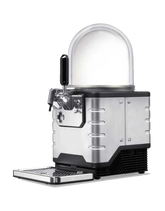How To Build A Home Pub Or Bar - The Complete Guide
What is a home pub?
A home pub can be whatever you want it to be, but in its essence, it remains the same: a safe and enjoyable haven for you and your closest friends to relax and unwind together, in the comfort of your own home. While pubs are wonderful, they can sometimes lack that intimacy that you want for a proper catch up – you can’t choose your own music, there are other conversations in the background, and a whole heap of distractions.
Your home pub is in a completely controllable environment, and can be as quiet or loud as you like. It also has the added benefit of having you as the bartender – this means you can drink whatever you like, at a fraction of the cost you’d have to pay in a pub!
Why are they good to build?
Home pubs are a wonderful DIY project for those who have already done a bit of woodwork, and want something to take their skills to the next level. Although they’re reasonably large structures, they’re not actually as difficult as they seem! You can probably throw one together in about a week, although you’ll find that the preparation stage is by far the longest – the actual cutting and screwing is relatively quick!
The process will allow you to learn a lot, and is incredibly satisfying. Once it’s finished, you can look at it and say both to yourself and to your friends, I made this! Home pubs can also be surprisingly cheap – if you get reclaimed wood, all you’re paying for is the paint, screws, and roofing, that is if you already have the tools. If you have to buy tools, while this pushes the cost up, those tools will be with you for life, and will allow you to partake in countless future DIY journeys.
Should you build them yourself?
In my personal opinion, they are definitely worth building yourself. Sure, a professional carpenter might make a neater job of it, but would it be as enjoyable to stand and make drinks in when it’s done? Absolutely not. The journey of planning and constructing it yourself will make using it so much more fun, and will mean you’re able to add to the features and adjust it as you have more ideas and inspiration!
That’s not even going into the cost aspect. Hiring a carpenter for a week could cost well over £1000, potentially more than doubling the initial cost of materials. Budget shouldn’t be your main reason for going it alone though, you should embrace the DIY side and not see it as cutting costs, but as a privilege and a joy in its own right. Below, we go through the ten steps it takes to make your own home pub!
10 steps & considerations for building a pub at home
1. Where to put it
Perhaps the biggest decision to make during this early planning stage is deciding whether you want to have your home pub inside or outside. For some people this won’t be an issue – if you don’t have a garden, it can’t go outside, and if you live in a small flat, it’s clearly not going inside. If you do have the option to do either though, it’s worth thinking about the pros and cons before you make a decision.
Having it outside is obviously lovely when the weather is fair. A drink with friends in a sunny beer garden, with all the comforts of your house, sounds like absolute heaven. Unfortunately, that does make your home pub weather dependent, and as we all know, it rains here an unreasonable amount. Making it inside means you can enjoy your pub in both winter and summer, and have a refuge no matter the weather.
2. Planning
The first step to actually building your home pub, as with anything, lies in the planning. While it might seem more fun to just jump right in and start sawing and screwing, the better you plan initially, the smoother the later stages of the process will go – you’ll end up thanking yourself in the long run.
Building a home pub is a relatively big DIY undertaking, so you may want to get designs from elsewhere, but if you’ve done a couple of woodwork projects before, there’s no reason why you can’t design it yourself!
While planning, you’ll want to price up the reality of all your ideas, the most significant of which will be the cost of the timber. You may have in mind a beautiful, smooth oak structure, but just the wood costs of a planed oak bar would run into the thousands. Pine is probably the cheapest option, and can be beautiful, but isn’t the only affordable option – have a look around, and enjoy the research stage!
3. Gathering materials
While you can order everything you need to your front door these days quite easily, in some ways this takes away from some of the joys of DIY. If you’re on a budget, you can try to get reclaimed wood – you may have to go collect it, but you can find some absolutely incredible stuff online, and the chances are that it’ll be free! You’ll probably find that your plans are dictated to a certain extent by what you find, so a degree of flexibility is important if this is what you choose to do.
If you’re not on a tight budget and want to be able to choose exactly the wood that you want, then rather than ordering online, I recommend going to a quality timber yard. You can walk around, handling the samples, and get a real sense of what’s available – far better than looking at pixels on a computer screen! It’ll be pricier, but you’ll know exactly what you’re getting, and it’s all part of the experience.
4. Gathering tools
Having the right tools will to a certain extent be the difference between complete success and total frustration. The basic tools you’ll need to build your pub are a saw, a combi drill, a set square for right angle cuts, a tape measure, and a spirit level.
The quality of your tools is also very important. Trying to use a blunt saw is not only annoying, you also won’t get your desired finish, and could spoil all the wood you’ve carefully found or bought. Handsaws are great, but if you want a higher degree of precision, you may want to buy a table saw. With tools though, it’s easy to get carried away, and it can get very expensive; good table saws can cost around £1000, and while you can always resell them afterward, it’s still a big purchase.
5. Building the base
How you build your base will depend on if you’re building the pub inside or outside. If it’s inside, it’s relatively simple – you can probably just have the whole structure rest on the floor. Beware that if it’s resting on carpet, the structure will likely be there for a very long time, and could permanently damage the pile.
If the pub is going to be built outside however, you do need to think about longevity. Laying wood straight on the ground will lead to it rotting quite quickly, even if it’s treated. Leaves and moss will build up, and the wood just won’t last. You may want to build a base platform, raised an inch or two on brick or something similar, just to allow it to air out. That platform could be a framework of 2x4s with some ply, hardboard, or reclaimed floorboards on top to act as a floor!
6. Putting up the studwork
The frame or your walls, or studwork, will be based on a structure of vertical 2x4s, with 16 inches between each length. This is a very common method of studwork construction – most dividing walls in houses are based on a similar construction! At the top and bottom of the wall will be two, horizontal 2x4s. At the end of each row of verticals, you can double up on thickness if you like – the corners of the structure need to be strong, and it will help with lateral stiffness.
For a small structure like a home pub, you may find that it’s easiest to cut and pre-assemble each of these studwork frames flat on the floor, and then raise them when you have each side built. It means that when you then stand them up, they have something to be fixed against, and won’t just tumble down! It still might be wise to get the help of a friend to raise them – you can pay them with a drink from the pub when it’s finished!
7. Building the roof
The type of room you build, and indeed whether you build one at all, depends on whether your pub is outside or not. If it’s inside, the construction is far simpler; you could even not put a roof on at all, but it will mean that the walls aren’t as supported and won’t quite complete the aesthetic. You can however build a simple, flat structure, without having to worry about weather proofing or rain.
If it’s outside, the roof is far more important. What you might find easiest is to build a flat internal roof, similar to one you might build in an indoor pub, and then put a pitched roof on top of that. It’s generally not a good idea to have flat roofs outside, as rainwater can pool, and make leaks far more likely.
8. Internal structures
Once you have the basic external structure built, you can start thinking about building the bar top, drinks cabinets, and any other useful compartments you think you might like. You’ll probably find that you have a lot of offcuts from your 2x4s which will be helpful with this, and you can play around to see what works best.
Once you’ve made some basic structures, you can top them in hardboard or ply. The bar top itself is something you’ll want to take a little more time with; it’s lovely to have a thick, solid wood bar, but it can also be extremely expensive to buy solid wood pieces that big brand new. Keep an eye out online and in your neighbourhood, and eventually you’ll find something which is just perfect!
9. Cladding
The wall and roof structures will now need to be clad. A common way to do this is to screw on boards of ply or chipboard, and then something nicer to look at like tongue and groove cladding on top.
To cut the ply boards, you’ll want to use a table saw or inline circular saw, in order to get straight cuts. If you don’t own one, you can probably get your local timber merchant to cut it for you – many places offer such a service for £1 a cut, which is certainly cheaper and safer than buying a new saw yourself for the one job.
10. Weather proofing & finishing
Now that you have a structure, it’s time to finish it! If it’s outside in your garden, you’ll want to paint the external walls with several coats of an appropriate durable paint. You’ll also want to coat the inside surfaces in something that makes them more durable and easier to clean. If you want to keep the wooden aesthetic, then you can use an oil or varnish that still lets the grain shine through.
If your pub is outside, you’ll want to pay special attention to weatherproofing the roof, or the second it rains, the whole thing will slowly begin to rot. You can buy rolls of roofing felt for next to nothing, just make sure you put it on properly, with the overlaps in the appropriate order on the pitch of the roof. Roofing felt doesn’t last forever, so keep an eye on it for any leaks and replace it if need be.
Conclusion
Planning any project like this is easily the most important aspect. With so much that can go wrong along the way, having a plan in place can (and will) allow you to avoid any potential mishaps! Beer breaks are optional but will no doubt be required along the way too…
If you enjoyed this guide you’ll also love:








